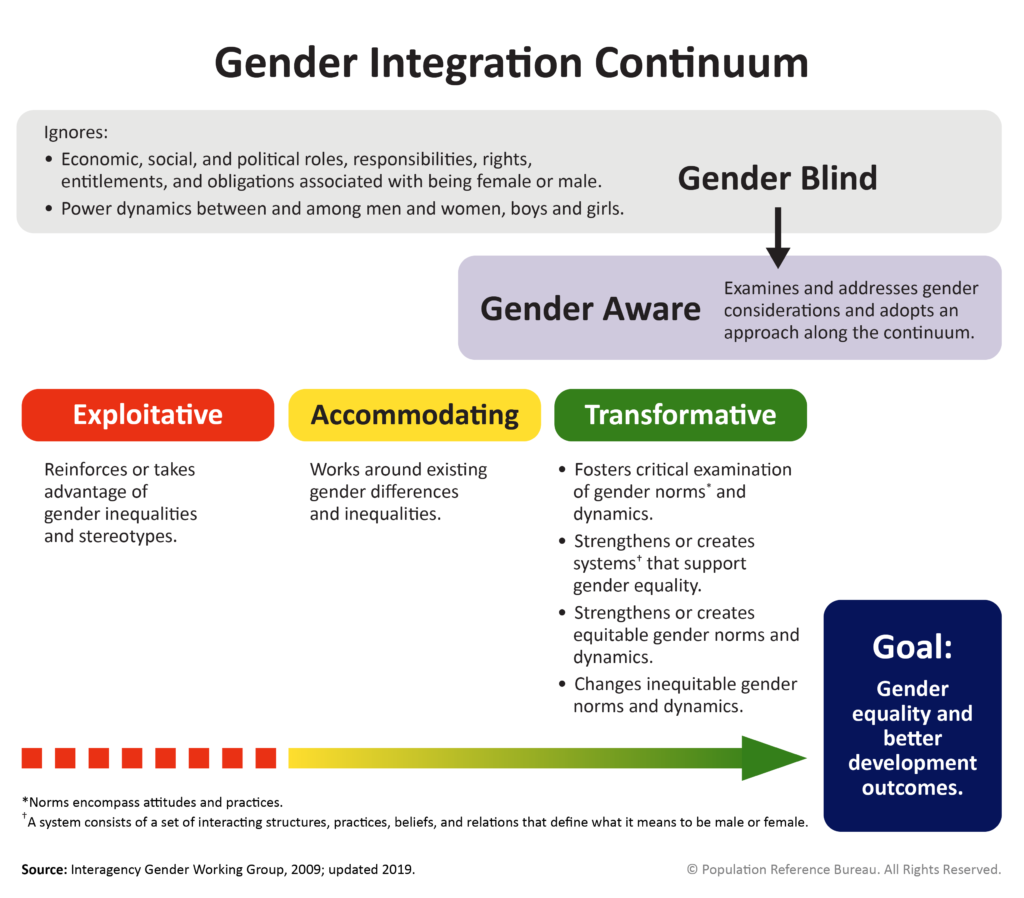The Interagency Gender Working Group (IGWG) plenary meeting was held on July 10, 2018, and included over 60 participants. IGWG members and prospective members came together to learn about new interventions, research and tools relevant to gender, to connect with colleagues in the gender community and to discuss ideas and key priorities for the network moving forward.
The Plenary kicked off with two technical presentations:
Women and Girls Lead Global: Using the Art of Storytelling to Create Social Change
Eric Martin, Independent Television Service (iTVS)
PDF (1.40 mb)
PowerPoint (284 mb)
Can the kinds of documentaries that screen at Sundance and other artistic film festivals really help global nongovernmental organizations drive measurable change? Women and Girls Lead Global (WGLG) was a five-year, five-country, 34-film evaluated experiment that led to community-designed solutions to challenges such as child marriage and gender-based violence.
Martin examined the role documentaries can play for social change and how iTVS’ theory of change could lead to community and individual action, with a focus on changes on harmful gender norms. He walked through the steps involved in WGLG’s change model in action, showing how their model of hosting documentary screenings, followed by facilitated community group dialogue, led to varying results in five countries. An evaluation of WGLG found that this approach leads to positive changes in attitudes and highlights the value and utility of films for engaging audiences to address harmful social norms.
Gender and the System Constraints on the Menstrual Hygiene Management (MHM) Consumer Journey
Dr. Kristen Little, Population Services International (PSI)
PDF (2.48mb)
Are markets for menstrual hygiene management products meeting the needs of adolescent girls and young women in India and Ethiopia? PSI conducted a retrospective review of their menstrual hygiene management market landscaping and consumer preferences research to document gender-related considerations for menstrual hygiene management in two countries.
Dr. Little shared key results from PSI’s recent research on gender and system constraints related to menstrual hygiene management in India and Ethiopia.The research sought to evaluate the preferences for commercial products, understand the root causes of low usage of products, and determine whether a market intervention could be an appropriate solution to the problem of low usage of commercial menstrual hygiene products. PSI found that availability of products is not the only solution to low uptake, though it is important to ensure freedom of movement and to allow for fuller participation in society. Other solutions must address knowledge sharing on menstruation and work to overcome structural and behavioral barriers to accessing products.
Following the presentations, six lightning round speakers shared updates on gender-related projects across various fields:
- Samantha Law, Chemonics International
Gender Competency Framework for Family Planning Service Providers
PDF (1.60mb) - Robyn Dayton, FHI 360
Integrating Gender-Based Violence Response and HIV Services for Key Populations and the General Population: The Benefits and Beneficiaries Are Widespread
PDF (890kb) - Charlotte Feldman-Jacobs, IGWG and PACE—Policy, Advocacy, and Communication Enhanced for Population and Reproductive Health—Project
The Gender Integration Continuum
Link - Sheila Scott, International Research & Exchanges Board
TAAP, Transforming Agency, Access and Power: A Toolkit and Guide for Inclusive Development
PDF (620kb) - Kate Plourde, FHI 360
Multi-Component Mentoring Program for Adolescent Girls and Young Women
PDF (687kb) - Tim Shand, Promundo
Gender-Transformative Bandebereho Couples’ Intervention to Promote Male Engagement in Reproductive and Maternal Health and Violence Prevention in Rwanda
PDF (124kb)
These presentations spoke to the various ways gender considerations can be integrated within a range of health and technical areas, such as reproductive and maternal health, GBV, and HIV, and in institutional settings to ensure inclusive development.
The last segment of the Plenary involved small group discussion where participants further explored existing programming around (1) gender integration, (2) addressing social norms, (3) responding to the particular needs of youth and (4) male engagement. Participants also identified key resources they have produced in these technical areas, as well as additional priorities for moving forward. For notes from the working group discussions, please download here.


